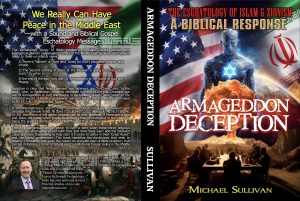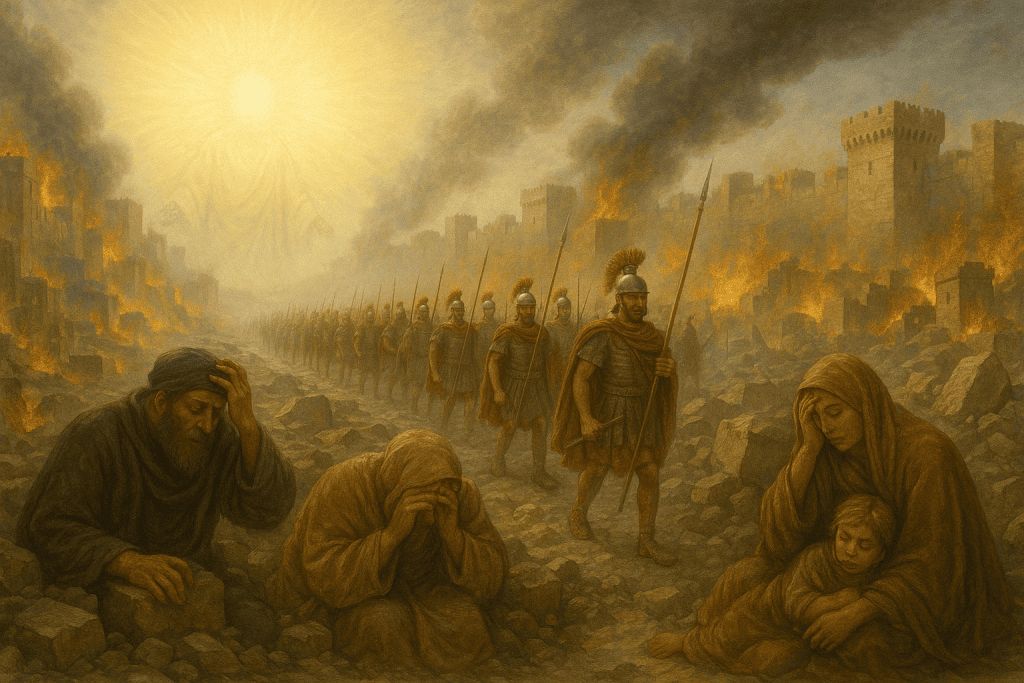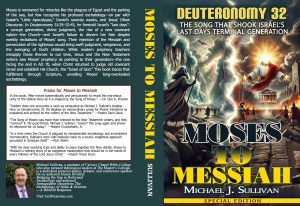Introduction
In popular eschatology, the eschatological “gathering” of Matthew 24:31 or the so-called “catching away” or “rapture” of 1 Thessalonians 4:15–17 is often portrayed as a future, global event detached from its Old Testament foundations. But this interpretation not only distorts the apostolic message—it divorces it from the very prophetic texts that Jesus and Paul continually reference.
When rightly understood in its covenantal context, the Book of Isaiah becomes an indispensable key for interpreting Christ’s second coming, the resurrection, and the trumpet “gathering” of the saints. Isaiah’s eschatology is not isolated or vague—it is the very matrix that shaped Jesus’ Olivet Discourse and Paul’s letters to the Thessalonians.
As we previously demonstrated in our series on Daniel, both Daniel 7:13 and 12:1–3 describe the Son of Man coming on the clouds in judgment and resurrection. These events are explicitly tied to the “time of the end” and the “shattering of the power of the holy people”—fulfilled in the judgment of Jerusalem in AD 70, not in the end of world history.
Isaiah confirms this same first-century framework. Specifically, three major sections—Isaiah 2–5, 24–27, and 59–66—form a comprehensive prophetic structure for understanding New Testament eschatology. These chapters unveil the Day of the Lord, the end of the old covenant age, the resurrection of the dead, and the wedding of the Messiah to His purified bride.
In this first installment, we examine Isaiah 2–5 and 24–27, showing how their themes of judgment, second exodus, resurrection, and messianic wedding directly inform Jesus’ teaching in Matthew 24–25 and Paul’s “rapture” theology in 1 Thessalonians 4. Far from inventing new ideas, Jesus and Paul were faithfully unfolding Isaiah’s vision—fulfilled in the covenantal transition of AD 70.
The Last Days and the Day of the Lord
Like Daniel 2 and 7, Isaiah 2 foretells the Messiah’s coming in judgment during Israel’s “last days.” The gospel would bring peace between Jew and Gentile during this period (vv. 2–5), but by its end, God would reject unbelieving Jerusalem (Isa. 2:6ff). On the climactic “Day of the Lord,” the wicked would flee to caves and rocks, trying to escape the terror and majesty of His coming (Isa. 2:10, 19, 21).
Jesus, Paul, and Isaiah 2
Commentators generally agree that Jesus applies Isaiah 2 to the judgment of AD 70 in Luke 23:27–30. Yet many claim that when Paul cites the same imagery in 2 Thessalonians 1:7–9, he’s referring to a different event entirely. This inconsistency is striking.
In reality, Paul’s eschatology consistently follows Jesus’ teaching. The immediate context of 2 Thessalonians 1 aligns with Isaiah’s prophecy and supports an AD 70 fulfillment.
| Isaiah (AD 70) | Jesus (AD 70) | Paul (AD 70) |
| The “Day of the Lord” in the “last days” when God comes in glory, power, and judgment; people hide in caves, asking mountains and hills to fall upon them (Isa. 2:10, 19–21).
|
Fulfilled in AD 70, when the Jews called for mountains and hills to fall on them, fulfilling Isaiah’s prophecy (Luke 23:27–30).
|
Christ comes from heaven in fiery judgment with angels, excluding the wicked from His presence and glory, fulfilling Isaiah 2 (2 Thess. 1:7–9).
|
Most commentators rightly see 2 Thessalonians 1:7–9 and 1 Thessalonians 4:15–17 as describing the same coming of the Lord.
Isaiah 3–5 and the Judgment of Jerusalem
“In that day,” Jerusalem would become as wicked as Sodom (Isa. 3:9; cf. Rev. 11:8). God would specifically judge Israel’s leaders for oppressing and killing the righteous and the poor. A clear principle of divine retribution would apply: the wicked would experience what they had inflicted upon others (Isa. 3:9–15). Thus, in this judgment, Jerusalem’s men would “fall by the sword” during “the war” (Isa. 3:25).
Yet, in the same timeframe, the Messiah—the “Branch”—would redeem a faithful remnant. Through a second-exodus judgment, He would cleanse their sins and renew His covenant. Isaiah depicts this renewal as a marriage, where God spreads His “cloud” as a protective “canopy” over His people on “Mount Zion” (Isa. 4:2–6).
Meanwhile, unfaithful Israel had become a barren vineyard, producing only injustice and bloodshed. Consequently, the oppressed and righteous cry out for God’s vindication (Isa. 5:5–7).
Jesus, Paul, and Isaiah 3
We have already established that Isaiah’s “last days” war, in which Jerusalem falls “by the sword” (Isa. 3:25), aligns with Daniel’s final “three-and-a-half years” (Dan. 9:24–27; 12:7). This period, culminating in the “shattering of the power of the holy people,” corresponds historically to AD 67–70. In Luke 21:24, Jesus explicitly combines Daniel 9:26–27 (LXX) and Isaiah 3:25 to describe this event.
Isaiah warns, “Woe to the wicked! It shall be ill with him, for what his hands have dealt out shall be done to him” (Isa. 3:11). Paul echoes this timeframe and theme in 2 Thessalonians 1:6–9: “God considers it just to repay with affliction those who afflict you … when the Lord Jesus is revealed from heaven …” Citing Isaiah 2:10, 19, and 21, Paul draws on this same judgment tradition. Isaiah 3:11 further clarifies Paul’s context: the Jews who persecuted the Thessalonians would themselves be afflicted—this time by the Romans, God’s appointed instrument. This retribution unfolded when Jews gathered in Jerusalem for Passover between AD 66 and AD 70, only to be trapped in the city during “the war.”
Isaiah 4:2–5 – The Second Exodus, Cleansing, and Messianic Wedding
I agree with Old Testament scholars who interpret the Hebrew word chuppah in Isaiah 4:5 as referring to a wedding canopy. This imagery symbolizes the Messiah’s redemptive coming, in which He cleanses the faithful remnant and renews His covenant with them—depicted here as a marriage. Under God’s protective “cloud,” the covenant union is portrayed vividly by Keil and Delitzsch:
And Jehovah creates over every spot of Mount Zion, and over its festal assemblies, a cloud by day, and smoke, and the shining of flaming fire by night; for over all the glory a canopy. The word chuppâh (from châphâh, to cover) does not denote a covering for protection against storm and weather, but rather a covering which glorifies what it covers, as the bridal canopy glorifies the bridal pair. [1]
Even today, chuppah refers to the four-poled canopy under which Jewish couples receive the nuptial blessing. Keil and Delitzsch note that this interpretation suits Psalm 19:6 and Joel 2:16 better than the typical rendering of thalamus(chamber) or torus (marriage bed).
Though few commentators or pastors recognize Isaiah’s depiction as the eschatological wedding between Christ (the Branch) and the Church (Zion/Jerusalem), some, like D. Marion Clark, have grasped it clearly:
The phrase – over all the glory will be a canopy – speaks of the special relationship he will have with them. A canopy projects an image of a bridegroom and his bride standing under a wedding canopy. Jewish couples still stand under a canopy in a wedding service. Isaiah is indicating that a marriage is taking place. This marital imagery aligns closely with Revelation 21:1–4:
“Then I saw a new heaven and a new earth, for the first heaven and the first earth had passed away, and there was no longer any sea. I saw the Holy City, the new Jerusalem, coming down out of heaven from God, prepared as a bride beautifully dressed for her husband.… He will wipe every tear from their eyes… for the old order of things has passed away.” [2]
Isaiah 4:5–6 – The Second Exodus and Messianic Wedding
Isaiah 4:5–6 continues the second exodus and wedding motif. God’s glory cloud serves as the wedding canopy, recalling Jewish tradition that saw the original exodus (Exodus 19–24) as Israel’s first “marriage” to God. Now, under Messiah, the Branch, a second exodus culminates in another eschatological wedding when the new “Jerusalem will be called holy.”
Jesus, Paul, and Isaiah 4
Jesus ties the eschatological wedding and feast to His coming in judgment at Jerusalem’s fall (Matt. 8:10–12; 22:1–7; 24–25). Likewise, Paul anticipates this messianic wedding within the Thessalonians’ lifetime:
“So that He may establish your hearts blameless in holiness before our God and Father, at the coming of our Lord Jesus with all His saints” (1 Thess. 3:13).
In 1 Thessalonians 4:14–17, Christ descends with His saints (raised from Hades) to “meet” (wedding term) the living and the dead in His “cloud” (wedding canopy), at the sound of a “trumpet” (wedding and exodus imagery). Paul draws from Exodus 19–24, redirecting the Thessalonians to the second exodus wedding of Isaiah 4:5–6 and Isaiah 25:6–9. The typological fulfillment—the antitype—occurs at Christ’s AD 70 coming.
This interpretation connects to Isaiah 2 and Matthew 8:10–12, where Gentile “nations” stream from “east and west” to Zion for cleansing and inclusion in the eschatological feast (cf. Isa. 4:2–5; 25:6–9), just as 1 Thessalonians 4 links the resurrection to the wedding.
Isaiah 5 – Israel, the Wicked Vine, and Bloodguilt
In Matthew 21:33–45, Jesus draws directly from Isaiah 5 in His Parable of the Tenants, indicting the Pharisees (v. 45) for killing prophets and, ultimately, the Son . These leaders were “filling up the measure” of their bloodguilt, leading to the judgment in AD 70. Consequently, the kingdom would be taken from them and given to another “nation”—the Church (Matt. 21:43; 23:29–36).
Paul echoes this in 1 Thessalonians 2:14–16, describing how the Jews who persecuted Christ and the prophets were now afflicting the Thessalonians, and would face God’s wrath at the “end” of the old covenant age.
Isaiah 24–27 – Israel’s De-Creation and Wedding Feast Resurrection
Isaiah 24 foretells covenantal de-creation as judgment for Israel’s violation of the Law of Moses (Isa. 24:5). The inhabitants are “scorched,” yet a remnant survives—indicating a covenantal and local judgment, not a global catastrophe (vv. 6, 10, 12). This mirrors the pattern in Isaiah 2–5 and 59–66: while Jerusalem falls under the sword, a righteous remnant endures.
Isaiah 25 continues the theme. Jerusalem becomes a “heap” and a “ruin” (v. 2), yet “in that day” God brings salvation, and a messianic wedding and feast unfolds on Mount Zion (vv. 6–9). Paul cites this in 1 Corinthians 15:54—“death is swallowed up in victory”—linking Isaiah’s feast to the resurrection. Together, Isaiah 4 and 25 frame this fulfillment in terms of a second exodus and eschatological wedding.
Jesus, Paul, and Isaiah 24–27
Jesus draws directly from Isaiah 24–25, uniting the themes of covenantal de-creation, Jerusalem’s ruin, resurrection, and wedding feast. In Matthew 24–25, He applies these prophecies to the fall of Jerusalem and temple destruction—placing all within “this generation” (Matt. 24:3–34; cf. 8:10–12). As Isaiah foresaw, Gentiles stream to Zion while unbelieving Jews are cast out.
Paul echoes Isaiah’s vision throughout 1–2 Thessalonians. The “Day of the Lord” is imminent. Christ will descend to “meet” His bride in the “clouds,” with the sound of a “trumpet”—language rooted in Isaiah’s second exodus and wedding imagery (Isa. 25:6–9; 27:13; cf. 1 Thess. 3:13; 4:15–17; 5:1–23).
| Isaiah 24–25 | Matthew 24–25 | 1–2 Thessalonians |
| When Jerusalem becomes a “heap” and “ruin,” God draws the nations to Zion for the eschatological wedding, resurrection, and the swallowing up of death (Isa. 24:10–12; 25:2, 6–9). | When God sends His armies to burn and desolate Jerusalem in AD 70, Christ gathers His elect at the trumpet sound to meet His bride for the eschatological wedding and resurrection (Matt. 22:7; 24:3–31). | When Christ descends from heaven bringing covenantal wrath upon the Jews persecuting the Thessalonians, He gathers His bride at the trumpet sound for the wedding and resurrection (1 Thess. 4:16–17; 2 Thess. 1:5–10; 2:1). |
| Isaiah 26–27 | Matthew 24–25 | 1–2 Thessalonians |
| Eschatological birth pains precede Israel’s judgment and resurrection (Isa. 26:17–18). | Eschatological birth pains precede Jerusalem’s judgment and resurrection (Matt. 24:8). | Eschatological birth pains precede Christ’s coming in judgment and resurrection (1 Thess. 5:3). |
| New covenant Israel becomes a fruitful vine, filling the world before the trumpet sounds for the gathering and resurrection (Isa. 27:6, 12–13). | The gospel bears fruit—having been preached in “all the world”—before Christ comes at the trumpet sound to gather His bride for the eschatological wedding and resurrection (Matt. 8:10–12; 13:1–43; 22:1–14; 24:14, 31, 36; 25:1–13). | Paul’s gospel bears fruit throughout the Roman Empire before Christ gathers His bride at the trumpet sound for the eschatological wedding and resurrection (1 Thess. 1:2–10; 4:16–17; 2 Thess. 2:1; cf. Col. 1:5–6, 23). |
Conclusion
The prophetic voice of Isaiah echoes with remarkable clarity through the trumpet language of Jesus and Paul. From the mountains trembling at the Day of the Lord (Isa. 2), to the Messianic wedding canopy stretched over Mount Zion (Isa. 4), to the eschatological feast and resurrection of Isaiah 25, and the trumpet-gathering of the faithful in Isaiah 27—this rich tapestry forms the essential background of Matthew 24 and 1 Thessalonians 4.
Jesus did not improvise when He declared that His angels would gather the elect “with a loud trumpet call” (Matt. 24:31), nor did Paul speak of a new event when he described the Lord descending from heaven with the sound of the trumpet of God. Both were interpreting Isaiah through the lens of the new covenant, revealing how the promises of resurrection, judgment, and covenant renewal would reach their fulfillment within the lifetime of their first-century audience.
As we’ve seen, Isaiah’s vision is both covenantal and corporate—it portrays the fall of the old Jerusalem, the salvation of a purified remnant, and the formation of a new, holy bride. This is no speculative future rapture. It is the climactic transformation of redemptive history, fulfilled in Christ’s coming at the end of the age in AD 70.
In Part 2, we will turn to Isaiah 59–66, the third and climactic section of Isaiah’s eschatological vision. There, we will explore how Isaiah frames the coming of the Redeemer, the final judgment of the wicked, the creation of new heavens and a new earth, and the ultimate vindication of Zion. Once again, we will see how Jesus and Paul draw from these very texts to explain the resurrection, the gathering, and the glory of the new covenant kingdom.
Books by Michael Sullivan: https://fullpreterism.com/product-category/books/

Website: fullpreterism.com
Patreon.com/MikeJSullivan
YouTube teaching videos: @michaelsullivan6868
X: @Preteristesch
[1] Carl Friedrich Keil and Franz Delitzsch, Commentary on the Old Testament, vol. 7, Isaiah, trans. James Martin (Grand Rapids: Eerdmans, n.d.), commentary on Isaiah 4:5, accessed March 27, 2025, https://biblehub.com/commentaries/keil/isaiah/4.htm.
[2] D. Marion Clark, “The Canopy of Glory,” SermonCentral, May 9, 2016, https://www.sermoncentral.com/sermons/the-canopy-of-glory-d-marion-clark-sermon-on-glory-201810. Emphasis added.



